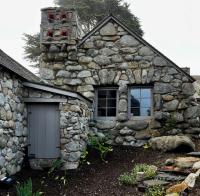National Historic Landmarks News
Scroll down to learn about new and updated National Historic Landmarks.
Scroll down to learn about new and updated National Historic Landmarks.

Take a tour through the National Historic Landmarks announced by the Secretary of the Interior on December 16, 2024.
The first nineteen places listed below are brand-new National Historic Landmarks. Many of these new landmarks contribute underrepresented histories to the NHL Program, building toward the National Park Service's goal of telling all Americans' stories .
The subsequent fourteen landmarks received updates to their original nominations. These updates ensure that a landmark's documentation reflects its current physical condition. Revising nominations also keeps the scholarship used to place a landmark into its historic context current and relevant.
To explore the map, click on a place listed on the left-hand column to learn more about that historic site. You may also click on the site's correlating map point.

The birthplace of vertebrate paleontology in North America, in Union, KY.

A site in Charleston, SC, associated with a strike organized by African American women during the winter of 1945-1946.

The headquarters of the Furies Collective, a lesbian feminist community centered in Washington, DC.

The most well-preserved windmill factory in the US, in Nebraska City, NE.

An archeological site in Rota Municipality in the Northern Mariana Islands, marking a quarry for latte - structural stone shafts and capstones integral to CHamoru architecture.

An International Style house in Petersburg, VA, designed by Amaza Lee Meredith (1895-1984), a queer Black artist and self-taught architect.

One of the premier long-distance scenic parkways in the US, stretching between NC and VA.

A landmark in the fight for LGBTQ+ marriage equality, in Boulder, CO.

A site of protests for equal treatment in public accommodations, in Greensboro, NC.

The courthouse associated with the 1933-1934 NAACP-led court case Commonwealth of Virginia v. Crawford, in Leesburg, VA.

A unique Arts and Crafts estate and landscape in Moultonborough, NH.

The home of Howard University's first dean of women, Lucy Diggs Slowe, in Washington, DC.

A site of human rights abuses suffered by CHamoru people during World War II, in Yona Municipality, Guam.

The first and longest-operating mobile Offshore Drilling Unit in Morgan City, LA.

The residence of artists Peter Hurd and Henriette Wyeth in San Patricio, NM.

A plant associated with the Rural Electrification Administration (REA), in Hampton, IA.

The largest and longest occupied campsite associated with Chinese laborers who worked on the Transcontinental Railroad, in Placer County, CA.

Home of poet Robinson Jeffers in Carmel, CA.

Golf course designed by renowned golf architect A.W. Tillinghast in Mamaroneck, NY.

Updated documentation for a historic district in Calumet, MI associated with the early copper mining industry.

Updated documentation for a Civil War-era battlefield in Middletown, VA, highlighting the Shenandoah Valley's history.

Updated documentation for a site in critical to the beginning of the US-Mexican War in Brownsville, TX.

Updated documentation for the headquarters of the World War II-era Alaska-Siberian Lend-Lease route in Fort Wainwright, AK.

Updated documentation for a Kānaka Maoli (Native Hawaiian) political and religious site in Kawaihae, HI.

Updated documentation for a mid-nineteenth-century copper mining company in Hancock, MI.

Updated documentation for the site of the first US naval air station in Alaska.

Updated documentation for a nineteenth-century industrial wool mill, its surrounding outbuildings, and adjacent farmland in Lawson, MO.

Updated documentation for the Wyoming capitol building in Cheyenne, WY, recognizing the state's role in the women's suffrage movement.

Updated documentation for an influential iron and steel manufacturing district in Alleghany County, PA.

Updated documentation for a coastal defense site in Hampton, VA, which was prominent in U.S. military conflicts from the Civil War through World War II.

Updated documentation for a site significant to the Alaskan Gold Rush, in Haines, AK.

Updated documentation for a significant coastal defense site in Port Townsend, WA.

Updated documentation for a Civil War battlefield in Frederick, MD.